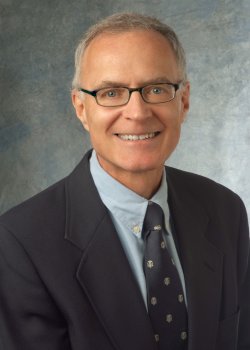
Aiding agriculture, improving manufacturing

Case Western Reserve University faculty will work with colleagues from across the country on a pair of sweeping, multi-million-dollar National Science Foundation (NSF) projects aimed at accelerating American manufacturing and agricultural research.
The two centers each include a group leader, Case Western Reserve and three other universities. They separately will focus on:
- Transitioning new manufacturing technologies to industry use by educating and re-training a more diverse workforce, a project led by Ohio State University.
- accelerating more resilient and sustainable food production by establishing a nitrogen circular economy, a project led by Texas Tech University.
HAMMER project addresses manufacturing issues
Led by Ohio State University, HAMMER center (Hybrid Autonomous Manufacturing, Moving from Evolution to Revolution) received a five-year, $26 million NSF grant with the ability to renew for another $26 million for an additional five years.
It aims to:
- develop and transition new manufacturing technologies to industry use;
- drive new technical education and credentialing to prepare, upskill, or reskill workers while also enhancing diversity among them;
- expand capabilities across the manufacturing supply.
Additional partners include Northwestern University, North Carolina Agricultural and Technical State University, and the University of Tennessee, Knoxville—along with more than 70 industry, educational and technical organization collaborators.
John Lewandowski, Distinguished University Professor and the Arthur P. Armington Professor of Engineering II in materials science, will lead the Case Western Reserve team.
Finally, Lewandowski said, the university’s position was made stronger by its “unique manufacturing/properties-related facilities” like the Advanced Manufacturing and Mechanical Reliability Center (AMMRC) and Sears Think[box].
Lewandowski said the work also would include collaboration with industrial and other stakeholders in Northeast Ohio and more broadly.
Lewandowski praised the CWRU’s Institute for Smart, Secure and Connected Systems (ISAACS) for its prior assistance and in preparing its part of the grant proposal.
“Without a doubt, ISSACS support—strategic insights, proposal development, network partners, administrative, funding—was critical to our success,” he said. “The team really understands how to augment faculty research efforts.”
Others involved from CWRU include: Jennifer Carter, associate professor of materials science and engineering and director of the Swagelok Center for the Surface Analysis of Materials; Robert Gao, the Cady Staley Professor of Engineering and chair of mechanical and aerospace engineering; Ken Loparo, the Arthur L. Parker Professor of electrical, computer and systems engineering; Pan Li, associate professor of electrical, computer and systems engineering; Fanny Ye, adjunct associate professor of computer and data sciences; and Susan Helper, the Frank Tracy Carlton Professor of Economics at the Weatherhead School of Management.
CASFER project addresses sustainable agriculture issues
In addition, CWRU is part of the Center for Advancing Sustainable and Distributed Fertilizer Production (CASFER), a five-university effort that Texas Tech leads.
This center also received a $26 million NSF grant for an initial five-year period with the possibility of renewing the grant for five more years and another $25 million.
Its goal is to develop new technologies to create effective and efficient fertilizers that pose significantly less harm to the environment—in particular by reducing or even eliminating the carbon it typically includes.
Although more than half of the world’s population is supported by food grown with the help of these synthetic nitrogen-based fertilizers (NBFs), it comes at a price.
Excess nitrogen in the soil and water lead to harmful algal blooms and oxygen-depleted (dead zones) in waterways like Lake Erie and the Gulf of Mexico. Worse, the production of these NBFs can contribute to higher ground-level ozone and greenhouse gases and thin the Earth’s protective ozone layer.
Roger French, the Kyocera Professor in materials science and engineering at the Case School of Engineering, will lead the Case Western Reserve team.
He said a multidisciplinary team will work on better managing and containing these fertilizers.
“We use geospatial satellite imaging and water measurements to identify land use and how to best manage the nitrogen in the environment,” French said. “We are able to also use predictive artificial intelligence (AI), or machine learning models, to predict how it is moving through our watersheds.”
In addition to Texas Tech and Case Western Reserve, the other partners are: Florida Agricultural and Mechanical University, Georgia Institute of Technology and the Massachusetts Institute of Technology.
Others involved from CWRU are: Laura Bruckman, associate professor of materials science and engineering, Jeff Yarus, research professor of materials science and engineering; Huichun (Judy) Zhang, the Frank H. Neff Professor of civil and environmental engineering; Chris Yuan, the Leonard Case Jr. Professor of Engineering in mechanical and aerospace engineering; Yinghui Wu, the Theodore L. and Dana J. Schroeder Associate Professor of computer and data sciences; and Julie Renner, the Climo Associate Professor of Chemical engineering.
The NSF has a fiscal year 2022 budget of $8.8 billion and awards grants to nearly 2,000 colleges, universities and institutions in all 50 states.
Each year, it receives more than 40,000 competitive proposals and presents roughly 11,000 new awards. Those awards include support for cooperative research with industry, Arctic and Antarctic research and operations, and U.S. participation in international scientific efforts.
This story was originally published in The Daily. For more information, contact Mike Scott at mike.scott@case.edu
